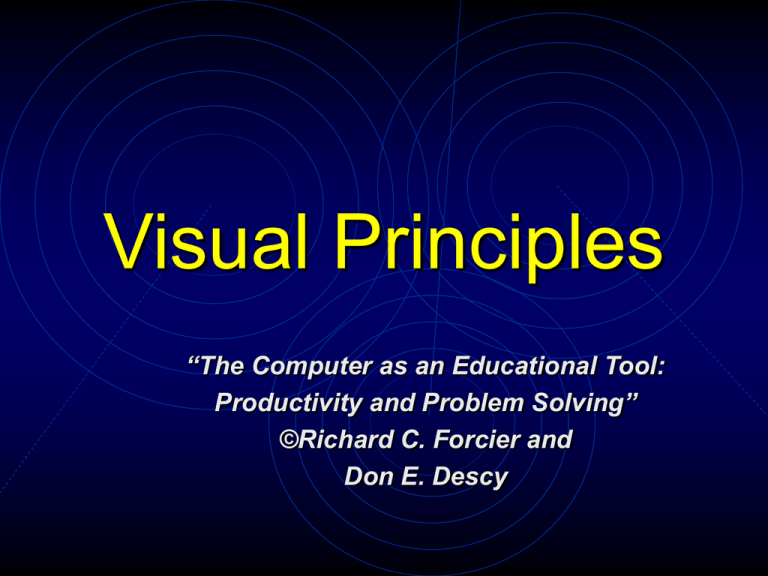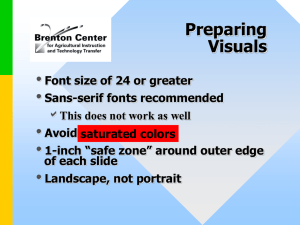Visual Principles 2
advertisement

Visual Principles “The Computer as an Educational Tool: Productivity and Problem Solving” ©Richard C. Forcier and Don E. Descy Why are visual principles important? • We live in a visual society. • Most students are visual learners. • 80% is learned from what one sees. • 50% of what one sees AND hears is remembered. Functions of Visuals • Concrete communication device to refer to • Motivate learners by increasing interest • Reiteration—underscore verbal or printed information by presenting it in a different form • Simplification Three Types of Visuals • Realistic • Shows actual subject being studied • Analogical • Conveys a concept by comparing it • Organizational • Shows relationships within text Using Visuals in Instruction • Decoding - read and interpret • Students under 12 see visuals section-by-section. • Cultural differences affect the perception of the visual used. Using Visuals in Instruction (Continued) • Encoding - communicating through visuals • The ability to arrange visuals in a logical order affects one’s verbal literacy. • Encourage students to use visual media in assignments Visual Literacy • One’s ability to interpret and communicate visual messages • Visual literacy crucial and parallel to reading and writing literacy Designing Visuals • Elements of art and design should always be considered. • Make a basic sketch of design to plan overall structure, then add details Line • Directs the eye around or to an area • Suggests action and movement • Divides or combines concepts Line (Continued) • Horizontal • Stability • Vertical • Strength • Diagonal • Movement Shape • A shape is a line closed upon itself. • Interacting shapes add interest. • Repetition • Simple Texture • Texture conveys a clearer, 3-D idea of the subject. • May be actual or implied • Adds interest with interaction • Should be used in moderation Color • Commands attention • Adds impact • Local color • Heightens realism • Expressive color • Adds emotion How Color Works • Warm colors approach. • Red helps memory. • Yellow is seen first. • Cool colors recede. • Blue is viewed as of lesser importance. Arrangement • Underlying shapes unify. • Lines move the eye along. • Color and texture highlight and elaborate. • Use balance, repetition, AND movement to achieve unity. • Keep it simple!

